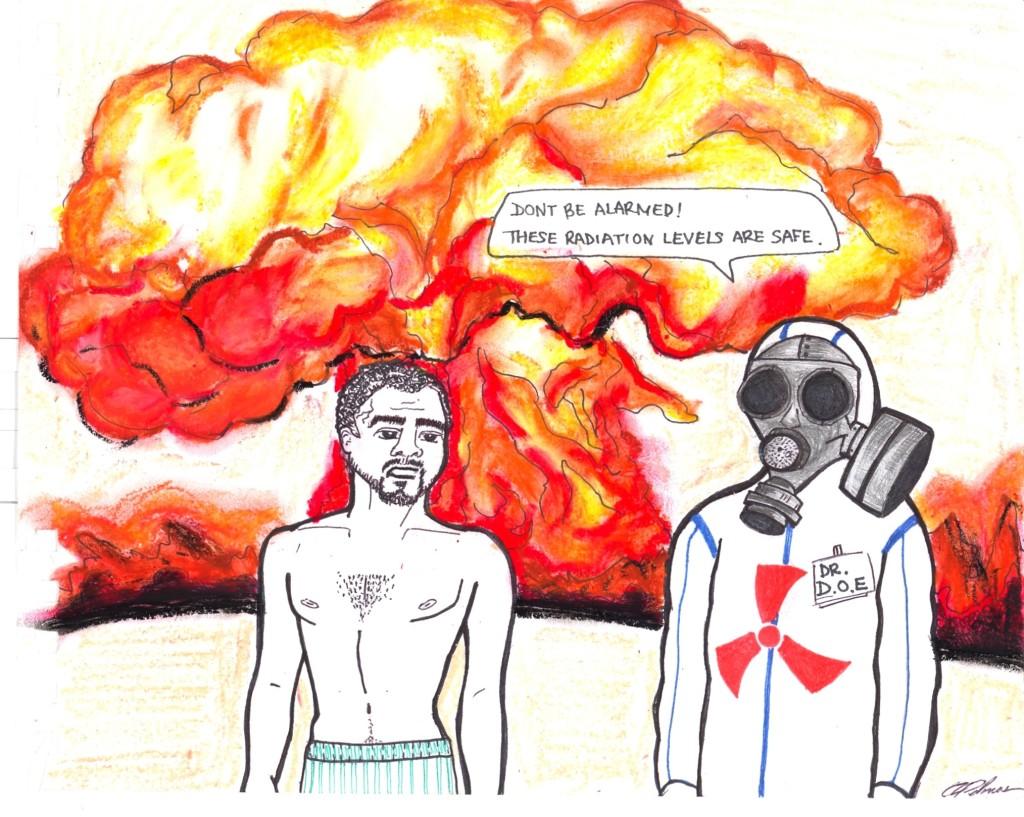Why we need to think twice about nuclear power
According to the European Nuclear Society, as of now, there are 437 nuclear power plants in operation in the world. The United States maintains 104 operational plants and is in the process of constructing one of the additional 68 plants being built around the world today. This means that our radiation levels are skyrocketing; yet, we are not addressing this issue because we are being misled.
We are being told by the Department of Energy that our bodies can handle “low” doses of radiation and that these doses can actually help regenerate mutated human cells. They are trying to prove that our bodies can adapt with time and build a tolerance to this radiation. Their information is misleading; they are using the lowest level of credible evidence known as “In Vitro” studies to back up their claims. These studies are unreliable because they are tested on a singular cell level rather than multiple as it should be and thus do not meet commonly accepted scientific standards. With the DOE using these studies as basis for healthy radiation levels, we are wasting precious time and money on Band-Aid solutions akin to building shelters to cover damaged nuclear reactors, instead of allocating funds toward alternative energy sources.
On April 26, 1986, Chernobyl’s fourth reactor exploded, causing severe birth defects, mental illnesses, cancer and hypothyroidism. Despite these diseases and abnormalities, surgeons in Ukraine say that there is no scientific proof connecting thyroid disease to Chernobyl. Other findings on cancer statistics in Ukraine and Belarus show that there “may” be an increase of childhood leukemia and breast cancer because of Chernobyl. Essentially, what they’re saying is that there is no scientific proof of a correlation between Chernobyl and the myriad of diseases occurring in the area.
This presumption is evidently distorted. There is an explosion of thyroid disease affecting the area surrounding Chernobyl immediately after the nuclear calamity and they are still speculating the connection rather than looking at the facts. Consequences this severe cannot be a mere coincidence. Official reports from the World Health Organization stated that there were over 6,000 thyroid cancer cases in the affected area and according to Greenpeace, based on numbers collected from hospitals in Belarus and Ukraine, approximately 270,000 cancers and 93,000 fatal cancer cases were caused by Chernobyl. The cloud of radiation from Chernobyl spread across all of Europe and the total number of people affected by radiation-related diseases may never be determined.
When the 9.0 magnitude earthquake and tsunami hit Japan, workers at the plant had no way to prevent the nuclear meltdown. Realistically, no amount of preparation could have stopped it; thus, they have no choice but to live with the consequences of the nuclear damage they were predisposed to. Japan’s current radiation levels are much more dangerous than last year’s projections had indicated they would be. Tepco, the Japanese company in charge of the Nuclear Reactor in Fukushima, reports that this year the radiation levels reached the highest point ever registered since the meltdown.
Much like Japan, California’s nuclear power plants sit on an earthquake-prone geological landscape, but Californians continue to live in denial of our nuclear plants’ susceptibility to earthquake damage. Because of what happened in Fukushima, the oceans are analogous to a toxic pool of radiation that is not getting diluted enough for safe living conditions. Like the thousands cases of hypothyroidism caused by the fallout radiation of Chernobyl, Californian babies are developing thyroid disease in startling numbers. Before the 2011 meltdowns at Fukushima, the normal rate of hypothyroidism cases in babies in California was one child in 2000. The “Radiation and Public Health Project in New York” came to California and collected data on babies born between March 17 and Dec. 31, 2011, and found that the number of confirmed cases of hypothyroidism increased 21 percent and the number of so called “borderline” cases increased 27 percent. The fact that children in California are victims to hypothyroidism indicates that we are not able to adapt to these low doses of radiation that have been set as a safe standard by the DOE.
The fact of the matter is that nuclear energy is an archaic technology that international authorities continue to support, despite there being other equally effective and much safer alternatives. Places like Germany, France and Italy are slowly shutting down their nuclear plants; Germany shut down eight of their 17 nuclear reactors and is in the process of ending their nuclear dependence by 2022. According to Greenpeace, the Japanese government plans to shut down all of their nuclear reactors by 2030. Some alternative energy sources that are already used today are hydro electric generators, solar power, geothermal plants, wind mills on land and oceans. Because of prioritization of energy by governments in oil, coal, and nuclear energy, these alternatives are not being used to their full potential. Most important, the cost of a single nuclear mistake is too high to put lives at risk. To be able to return the world to a healthy ecological state, we need to follow in Europe’s footsteps. We need to phase out nuclear energy and move on to alternative, sustainable sources that don’t incorporate fatal outcomes.






